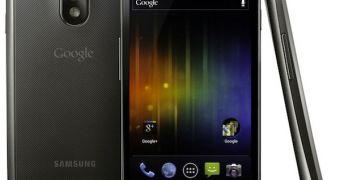When made available for purchase on the airwaves of Verizon Wireless, the new Samsung Galaxy Nexus smartphone will pack 32GB of internal memory, and not 16GB as previously stated.
The info comes from Google themselves, who updated the specification list for the mobile phone to reflect the new state of facts.
Last week, the said page was showing that Galaxy Nexus would be available only with 16GB of internal memory, but now it says 32GB instead, meaning that users will after all enjoy the possibility to carry around more videos, photos, songs and other files.
On the said specs page for the US Galaxy Nexus, we also learn that the device will arrive on shelves with a 1850mAh battery inside, compared to the 1750mAh battery included in the UK flavor.
Given the fact that the mobile phone will offer LTE connectivity on Verizon's network, it does not come as a surprise that its specs was modified, though a larger battery resulted in the device being thicker (9.47 mm) and heavier (150g).
On the downside, however, we should note that, while the new Android 4.0 Ice Cream Sandwich OS flavor allows it, the Galaxy Nexus will not offer support for USB mass storage.
Apparently, this feature is exclusive to those devices that feature removable storage, such as microSD cards, or separate partitions for storage.
Android engineer Dan Morrill explains that the manner in which the latest flavors of Android manage a phone's internal memory is the main reason for this. Here's what he posted on reddit:
ICS supports USB Mass Storage (UMS). The Galaxy Nexus does not. This is the same scenario as Honeycomb, as for instance HC supports USB Mass Storage while Xoom does not.
If a given device has a removable SD card it will support USB Mass Storage. If it has only built-in storage (like Xoom and Galaxy Nexus) it will (usually) support only MTP and PTP.
With the unified storage model we introduced in Honeycomb, we share your full 32GB (or 16GB or whatever) between app data and media data. That is, no more staring sadly at your 5GB free on Nexus S when your internal app data partition has filled up -- it's all one big happy volume.
However the cost is that Android can no longer ever yield up the storage for the host PC to molest directly over USB.

 14 DAY TRIAL //
14 DAY TRIAL //